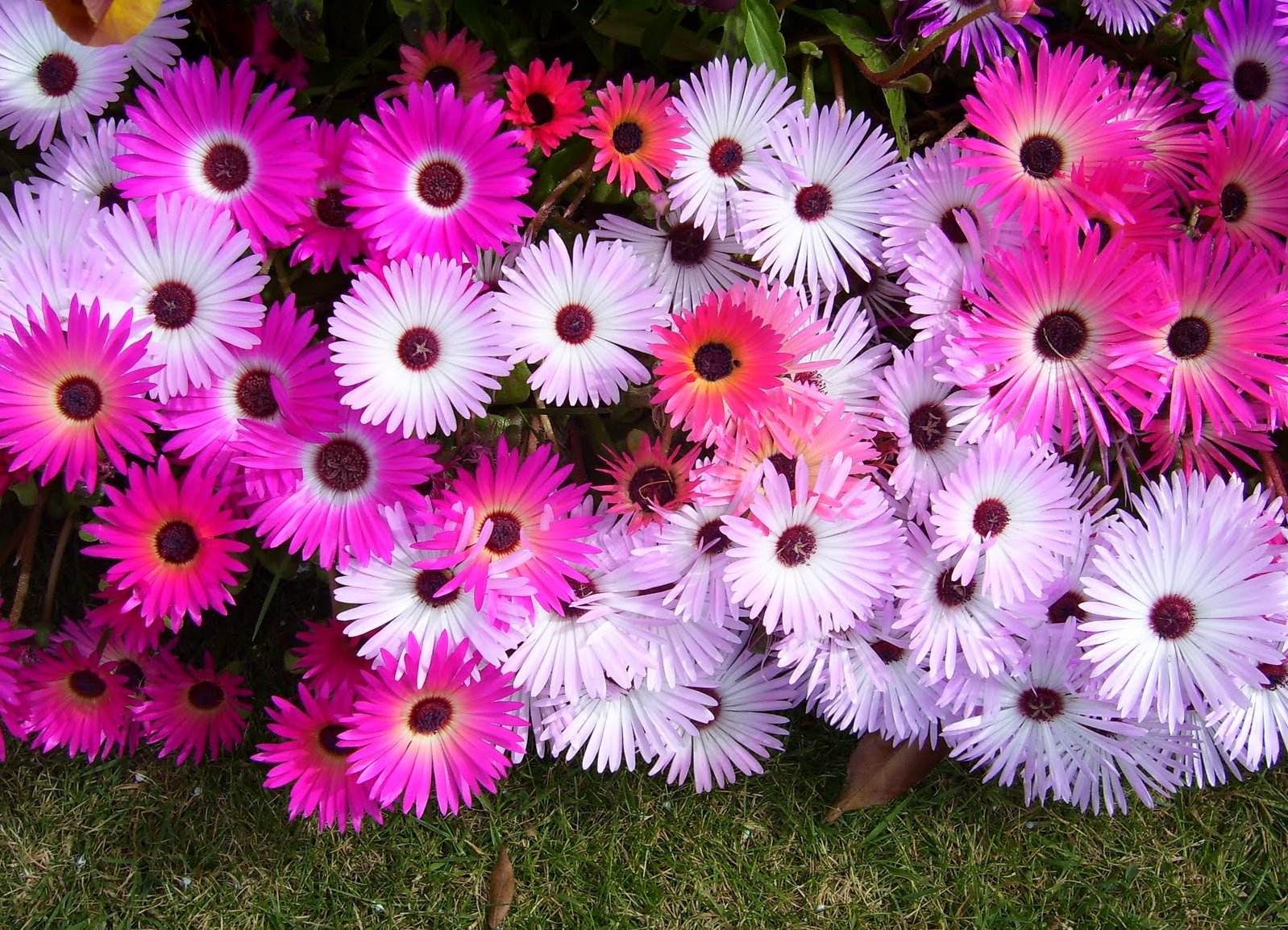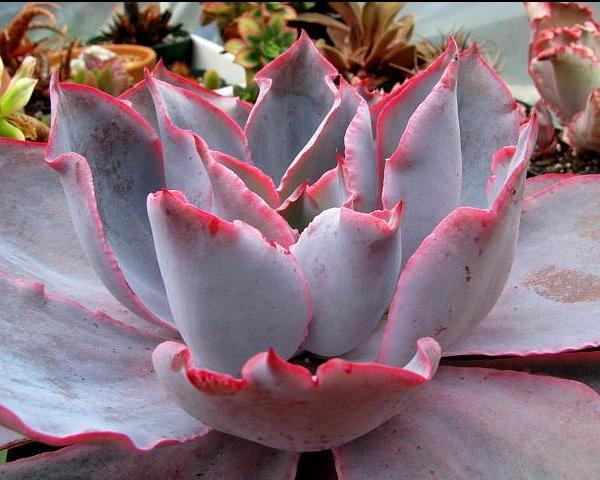Ad Blocker Detected
Our website is made possible by displaying online advertisements to our visitors. Please consider supporting us by disabling your ad blocker.
6. Cleretum Bellidiforme (Ice Plant)

The Ice Plant is a dwarf, evergreen succulent with purple flowers that can grow up to six inches tall. It is a spreading mat-forming plant that can quickly spread on the ground.
Its fleshy leaves are green and cylindrical in shape. They resemble pieces of ice, and that’s why it got its name.
It’s best to have this planted in rock gardens or dry-wall stones. It makes a good ground cover, and its flowers are hard to miss.
It’s an easy-to-grow plant, and you won’t have a hard time making it spread. This plant can grow in cold and warm climates.
Speaking of its flowers, they look like daisies. The flowers are typically purple or bright red in color.
They bloom continuously from summer to fall. It’s a great addition to your garden if you want something eye-catching.
Specifications
- Origin: Native to South Africa
- Hardiness: The Ice plant thrives in USDA Hardiness Zones 5 to 9
- Light Requirement: While this plant thrives in both cold and warm weather, it still requires full sun exposure. It needs at least 6 hours of sun per day.
- Watering: It has a low wagering requirement. Even if it is drought-tolerant, it still could use some watering during the summer.
- Problems: It is deer-resistant, but can be occasionally affected by aphids and mealybugs.
7. Echeveria Afterglow

A hybrid between Echeveria cante and Echeveria shaviana.
The Echeveria Afterglow is an evergreen succulent that is known for its powdery and pinkish-lavender leaves.
The edge of its leaves has a bright red or pink tone. It could grow up to 16 inches wide in the form of a rosette and up to 2 feet tall, height-wise.
The care for this plant is the same as with most Echeveria plants. It’s not high maintenance and also requires well-draining soil.
This can easily be propagated from leaf cuttings, stem cuttings, and by simply getting its seeds.
The Afterglow blossoms most during summer with pinkish lavender or orange-red flowers. This is what this plant is known for – its gorgeous color and beauty. That’s why it’s one of the best choices if you need some color in your garden.
Specifications
- Origin: Native to Texas, Mexico, Central, and South America
- Hardiness: The afterglow thrives in USDA Hardiness Zones 9 to 12
- Light Requirement: This plant requires partial to full sun. It would need at least 4 hours of sun exposure each day.
- Watering: Like most Echeveria species, this doesn’t require much watering. It’s best to only water this when its topsoil is already rough and dry.
- Problems: Susceptible to pest infestation like mealy bugs, vine, and aphids.
8. Crassula Ovata (Jade Plant)

The Jade Plant is known for other names, like the Money Tree, Money Plant, Jade Tree, Dollar Plant, Pink Joy, and Friendship Tree.
This is a branched succulent with round, glossy, and fleshy leaves. Its leaves are typically dark green in color.
Its leaves can be as long as 2 inches, while the shrub as a whole can grow up to six feet tall. The shape of its leaves is interestingly oval, making it appear egg-shaped. The leaves are also a bit pointed at the tip.
Its star-shaped flowers come out during spring and mid-winter, and they are typically pink in color.
Sometimes, its flowers are colored light purple or white. It’s a refreshing inclusion to your already colorful garden.
Specifications
- Origin: Native to South Africa and Mozambique
- Hardiness: The Jade Plant thrives in USDA Hardiness Zones 9 to 11
- Light Requirement: This plant requires full sun or light exposure. It will need at least 6 hours of sun exposure daily.
- Watering: This is a drought-tolerant plant that only has the average watering need for succulents. It’s best to water jade plants regularly, but remember not to over-water them.
- Problems: A jade plant can easily limp when it’s either over or underwatered. This is also susceptible to pests like scales and mealy bugs.
9. Hesperaloe Parviflora (Red Yucca)

The Red Yucca is a perennial and evergreen succulent that has long and arching green leaves.
This kind of resembles a clump of tall grass with pinkish stalks that are its flowers. Its leaves are leathery and can be as long as 4 feet.
Its flowers are indeed typically pink, but they may also appear as coral or light red-colored. They typically grow in clusters and can blossom all year round.
However, it best blooms during the summer. These flowers can easily attract hummingbirds.
Specifications
- Origin: Native to Texas and Northern Mexico
- Hardiness: Can be grown in USDA Hardiness Zones 5 to 11
- Light Requirement: The Red Yucca will need partial to full sun. It will need at least 4 hours of light exposure daily.
- Watering: It has a low demand for watering, like most succulents. Just make sure to water this when the topsoil is completely dry.
- Problems: It is prone to over-fertilization and overwatering, which will lead to drying leaves.

